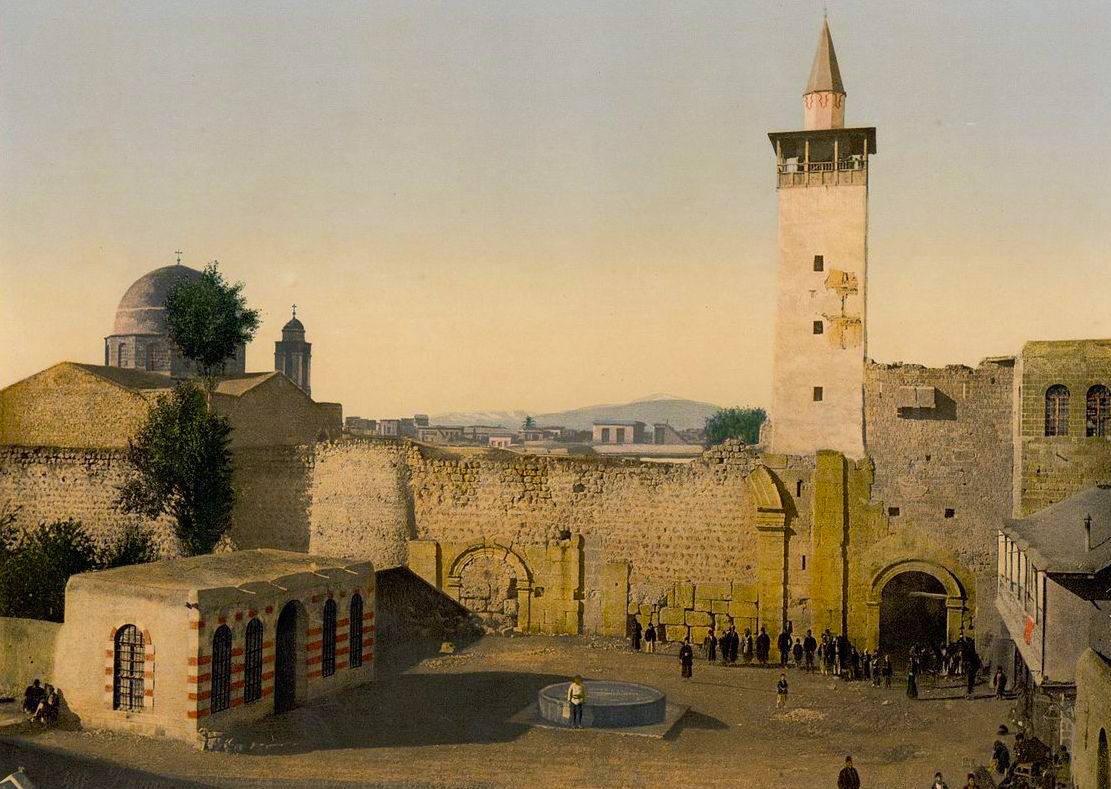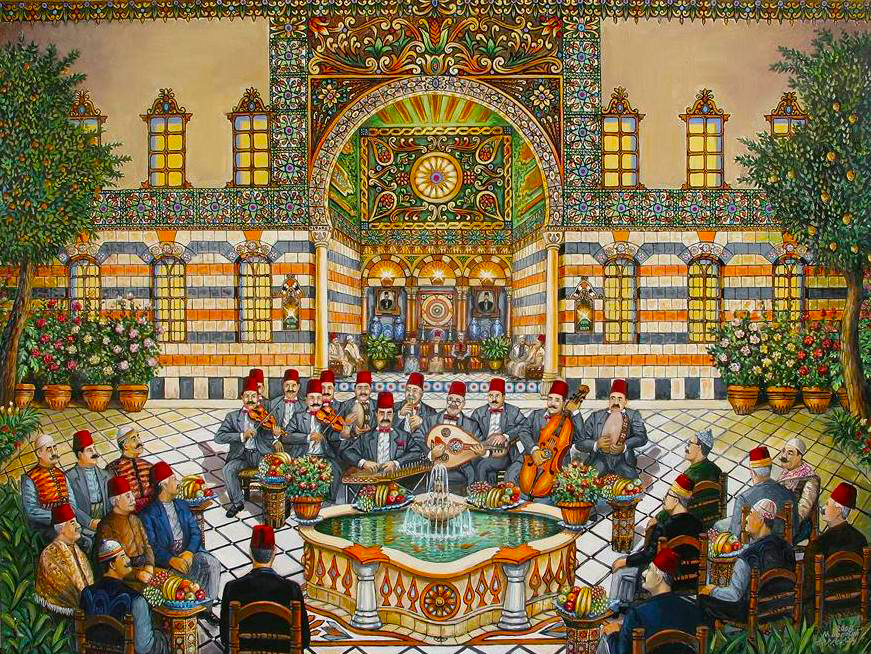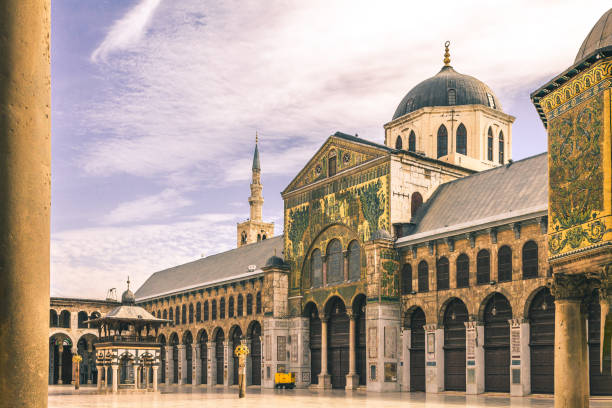The Umayyad Mosque of Damascus: A Monument of Faith, History, and Beauty: Nestled at the heart of the ancient walled city of Damascus lies one of the greatest architectural and spiritual treasures in the Islamic world: the Umayyad Mosque, also known as the Great Mosque of Damascus. It is not just a place of worship—it is a living museum, a sacred landmark, and a symbol of the cultural, religious, and historical legacy of Syria and the Middle East.
For travelers seeking to uncover the soul of Damascus, visiting the Umayyad Mosque is not optional—it is essential.
A Site of Worship for Over 3,000 Years
To understand the significance of the Umayyad Mosque, we must go far back into history—long before the rise of Islam. This site has been considered sacred for more than three millennia.
Aramean Era (before 1000 BC): The site originally hosted a temple to Hadad, the Aramean god of thunder and rain.
Roman Era: When the Romans conquered Damascus, they transformed the temple into a grand shrine to Jupiter, the king of the Roman gods. The temple complex was massive, adorned with columns and statues, some of which still remain embedded in the mosque’s outer walls.
Christian Period (4th–7th Century AD): After the Roman Empire embraced Christianity, the site became a church dedicated to Saint John the Baptist—known in Islam as Prophet Yahya. Christians believed that John’s head was buried there, and a shrine was built in his honor.
This overlapping heritage makes the Umayyad Mosque one of the few places in the world where the Abrahamic faiths have all worshipped on the same ground.
From Church to Mosque: The Umayyad Transformation (705–715 AD)
When the Muslims took Damascus in 634 AD, they initially shared the church with the local Christian community, each using separate areas of the complex for prayer. This coexistence lasted for several decades.
In 705 AD, Caliph Al-Walid I of the Umayyad dynasty initiated the transformation of the entire structure into a mosque. Rather than destroy the existing church by force, he negotiated with the Christian community, offering other properties and compensation in exchange.
The result was a new kind of mosque, built on a monumental scale, using a blend of Byzantine, Roman, and Sassanian architectural styles. It was designed not only as a religious space but as a statement of Islamic civilization’s emerging power and sophistication.
Architectural Wonders of the Umayyad Mosque
The Umayyad Mosque set the standard for Islamic architecture for centuries to come. Here’s what makes it so extraordinary:
1. The Courtyard (Sahn)
As you enter the mosque, you’re greeted by a vast white-marble courtyard, framed by arched porticoes and punctuated by elegant structures. The Dome of the Treasury (Qubbat al-Khazna), located at its center, was once used to store manuscripts, relics, and riches of the Umayyad Caliphate. Its octagonal shape and richly decorated roof sit atop Roman columns—an elegant blend of civilizations.
2. The Prayer Hall
The interior prayer hall is immense—vast enough to hold thousands of worshippers. Sunlight filters in through stained-glass windows, casting colorful reflections across the marble floor. Three wide aisles run parallel to the qibla wall, with a beautifully carved mihrab (prayer niche) and ornate minbar (pulpit).
3. Mosaics
One of the mosque’s most famous features is its surviving Byzantine-style mosaics—crafted by Christian artisans from Constantinople. These gold-and-glass mosaics depict flowing rivers, lush gardens, and paradisiacal cities without human or animal figures—symbolizing heaven in Islamic tradition. Although much has been lost to fire and time, the surviving panels are breathtaking.
4. The Tomb of John the Baptist (Prophet Yahya)
At the center of the prayer hall stands a green-domed shrine, believed to contain the head of John the Baptist, venerated by both Christians and Muslims. The shrine is visited by people from all faiths, often lit with candles and adorned with flowers and prayers.
5. The Minarets
The mosque has three minarets:
Minaret of the Bride (Al-Arous) – the oldest, dating back to the 9th century.
Minaret of Jesus (Isa) – where, according to Islamic belief, Prophet Jesus will descend before the Day of Judgment.
Minaret of Qaitbay – built in the 15th century under Mamluk rule, named after the Egyptian sultan.
Trials Through Time: Fires, Earthquakes, and Restoration
Despite its strength and grandeur, the Umayyad Mosque has not been immune to disaster:
A fire in 1069 AD destroyed parts of the roof and some mosaics.
A massive fire in 1893, caused by a malfunctioning stove, led to major damage to the prayer hall’s wooden interior.
The mosque was affected during the Mongol invasions, the Tamerlane era, and modern-day conflict, though restoration efforts have continued over centuries.
Thanks to successive rulers—from Ayyubids and Mamluks to Ottomans and the modern Syrian state—the mosque has been carefully restored and preserved, making it one of the best-maintained ancient mosques in the world.
A Living Mosque for All
Despite being a top historic attraction, the Umayyad Mosque remains an active place of worship. On Fridays and during Ramadan, the mosque fills with thousands of worshippers. At other times, the courtyard becomes a tranquil place where children play, elders chat, and travelers pause in awe.
Visitors—regardless of religion—are welcome, but should dress modestly:
Women: Headscarf and full-length sleeves/pants or abaya (available at the entrance).
Men: Avoid shorts or sleeveless shirts.
Practical Visitor Information
Location: In the heart of Old Damascus, steps away from Al-Hamidiyah Souk and Saladin’s Mausoleum.
Opening Hours: Typically 8 AM – 8 PM, with short closures during prayer times.
Entrance: Free for locals and worshippers; international tourists may be asked to make a small donation.
Guides: Available at the gate; many speak English, French, or Spanish. Self-guided tours via apps or guidebooks are also possible.
Nearby Attractions
Your visit to the Umayyad Mosque can easily be paired with other major attractions:
Al-Hamidiyah Souk – the largest covered market in Syria, perfect for souvenirs and snacks.
Mausoleum of Saladin – adjacent to the mosque, this humble tomb honors the legendary Muslim leader.
Roman Temple Remains – visible around the mosque’s outer walls.
Azem Palace – a few minutes’ walk, showcasing traditional Damascene architecture and lifestyle.
Why the Umayyad Mosque Matters
The Umayyad Mosque is more than a mosque. It is a symbol of religious tolerance, a testament to artistic achievement, and a living witness to over 30 centuries of spiritual devotion.
Standing within its vast courtyard or pausing before the tomb of John the Baptist, visitors often feel something that transcends history—a quiet connection to all who have prayed, dreamed, and built here over millennia.
Whether you’re a history lover, a spiritual seeker, or a curious traveler, the Umayyad Mosque will leave you humbled, inspired, and deeply moved.



